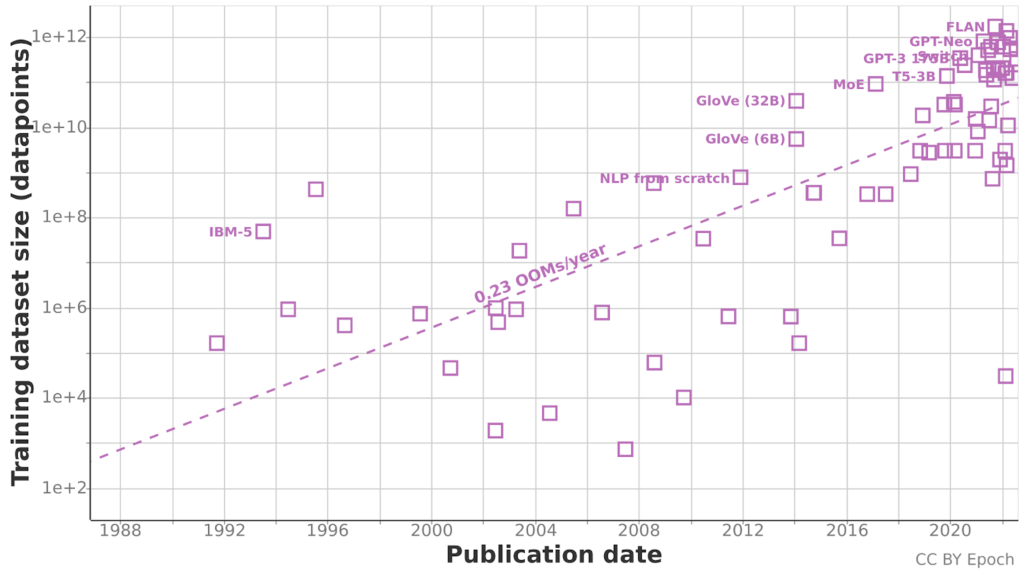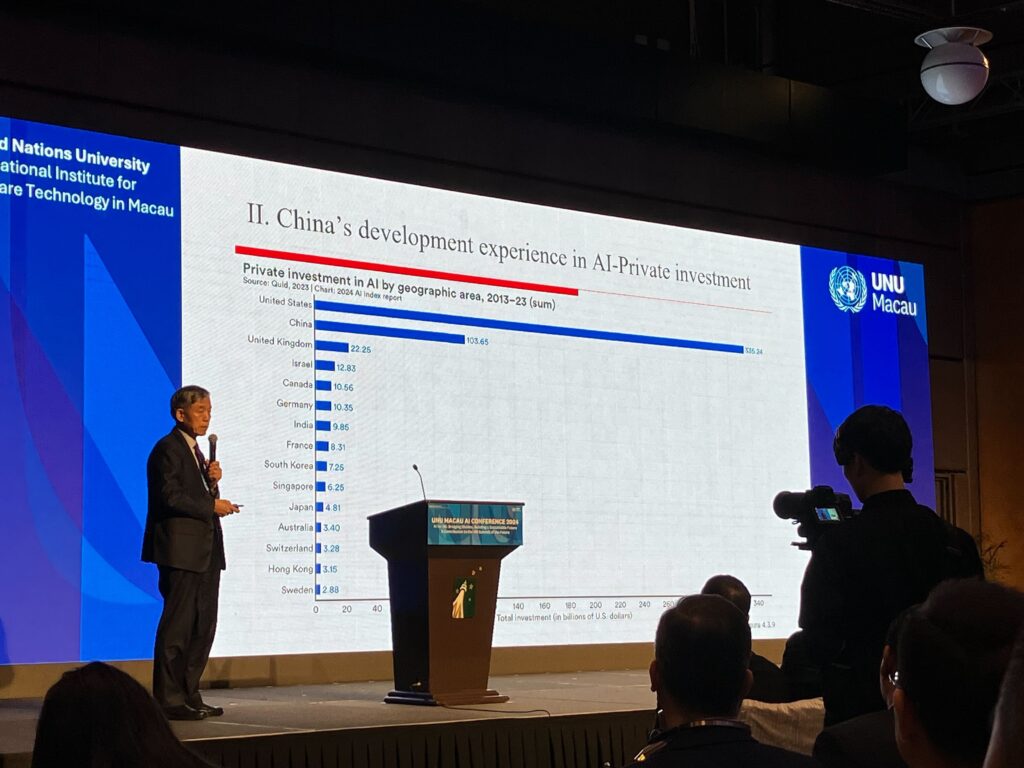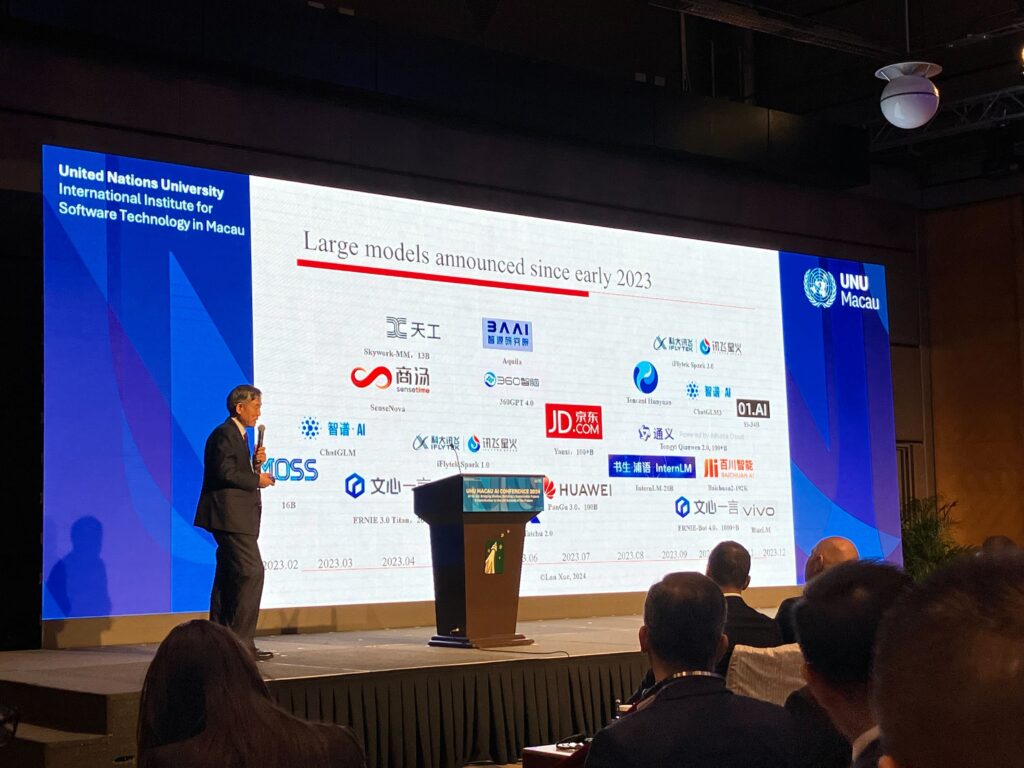What We Aim with Generative AI (“New Science” towards Pax Japonica (Vol.1))

Generative AI brings us something new almost everyday, which you can see in news websites about technology and information. One of the reasons behind this trend is ChatGPT, released in November in 2022. This text generating AI is an icon of generative AI, reaching 100 million users within only two months after its release. Its unique characteristics caught people’s attention, such as Scaling Laws, which bigger dataset sizes improve the language model performance [Kaplan et al. 20]; as well as human feedback and labeling improve the performance (which makes it easier for investors to predict the risks and returns compared to other technological tools).
(Bigger training datasets are used to improve generative AI performance. This figure mainly shows text generating AI.)

(Reference: Villalobos and Ho)
More than a year passed after the release of ChatGPT, and the term generative AI now includes images, voices and sounds, and animation. Then, how does Japan use this innovative technology as a member of the global community? The UN Secretary-General António Guterres called for urgent actions to members, specifically pointing out the risks of climate changes and unregulated AI developments at the World Economic Forum’s Annual Meeting, held in Switzerland this January [United Nations 24]. Unregulated research, development, and application of AI will bring risks since this frontier technology is easily used from international to personal levels across various fields like economic, medical, and social activities.
Therefore, the UN had started launching international communities and forums to safely develop AI and harness it for humanity, in addition to digital technologies to improve AI. One of these forums is the Internet Governance Forum, which our CEO attended as a round speaker, and introduced in this blog “Round Speaker at IGF 2023 in Kyoto.” At this forum, a suggestion was made from the head of United Nations University Institute in Macau (UNU Macau); and now, this suggested plan to hold a webinar with UNU Macau is in progress.
As refining this plan, the researcher of UNU Macau introduced us two things. First one is Rector Tshilidzi Marwala of the United Nations University; Under-Secretary-General of the United Nations. Second thing is the AI conference held by UNU Macau from April 24th to 25th (the main research fields of UNU Macau are collective intelligence and digital technologies).
(Dr. Xue Lan during the presentation about AI development and governance in China at the opening ceremony of the AI conference. Dr. Lan’s research includes innovation policy and global governance at Tsinghua University and he also works for UN communities [World Economic Forum].)

(Taken by the author)
The theme of the AI conference was “AI for All: Bridging Divides, Building A Sustainable Future.” Its main message was more of political rather than academic. For example, the importance of bridging Global South and North as well as Culture East and West was heavily emphasized throughout networking opportunities and opening ceremony. The participants were mainly from companies and educational institutes in China; it seemed that no one was from Japan, Korea, and the U.S. except us. This was surprising not to see participants from these areas, considering that Macau is a well-known casino resort, and increasing attention and importance of AI research and development.
Moreover, it was clear that China’s AI field, both academic and economic is growing rapidly. The image above shows the amount of private investment in AI across the globe. The biggest investor is the U.S. investing more than 335 billions from 2013 to 2023, and China takes the second place, investing 1/3 of the U.S. (Japan is ranked 11th). If you take a look at journal papers about AI, almost 40% of papers are published in China, which surpasses other nations and communities such as E.U.
(Large models and their companies announced in China since 2023, which was also introduced at the opening ceremony. It is worth checking how many companies and municipalities in Japan have launched or will launch AI models and basic technologies to apply AI services.)

(Taken by the author)
There was an official announcement made in this conference—the launch of United Nations University AI Network. It aims to become “a comprehensive global platform” connecting various stakeholders in academia, private sectors, policy making and civil society [UNU Macau]. Again, the attendees at this launching celebration were mainly from Chinese institutes (at the time of this conference, only foreign members of this network at a national level were Austria and Cambodia).
This two-day-conference with the theme of AI for all, left an impression of leading China in AI field. Speakers of sessions were mainly from China. Does China remain this position with the advantages of data collection and of vast datasets, which are essential for AI development?
Now, how about Japan? Do we get involved in this first stage as UNU officially and globally launched the network of AI research and application? We IISIA are organizing the webinar about generative AI and diplomacy with UNU Macau. If you are interested, please check our blogs which will introduce our plan and global trends relating to generative AI.
Corporate Planning Group, Ayuko Sakurai
【References】
[Kaplan et al. 20] Kaplan, Jared, et al. “Scaling laws for neural language models.” arXiv preprint arXiv:2001.08361 (2020).
[United Nations 24] United Nations “UN Chief at WEF 2024 in Davos | United Nations.” YouTube, uploaded by United Nations, 18 Jan. 2024.
(https://www.youtube.com/watch?v=MQQ9fyRP3WA Accessed 13 May. 2024.)
[UNU Macau] UNU Macau “UNU Artificial Intelligence Network.”
(https://aimacau-2024.org/unu-ai-network/ Accessed 13 May. 2024.)
[Villalobos and Ho 22] Villalobos, Pablo., and Anson Ho. “Trends in Training Dataset Sizes.” Epochai.org (2022).
[World Economic Forum] World Economic Forum “Xue Lan.”
(https://jp.weforum.org/people/xue-lan/ Accessed 13 May. 2024.)


